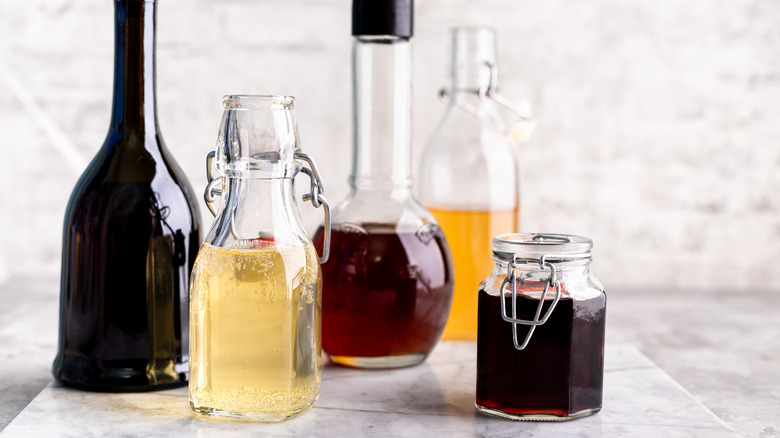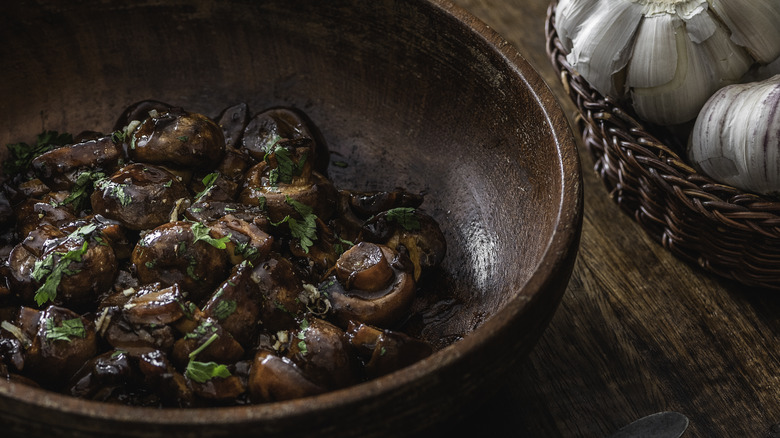French Vinegar Adds A Punch To Any Dish Thanks To The Sweet Wine It's Made From
Countless types of vinegar flood the market today, from balsamic to red rice, white wine, raspberry, raisin, apple cider, champagne vinegar, and many more incarnations of deliciousness in a bottle. You'd be forgiven for overlooking one of the most interesting vinegars, especially as it comes from a select region in France and takes a bit of sleuthing to obtain. That would be a punchy little French vinegar known as Banyuls, produced in the same region as the wine from which the vinegar evolves.
Banyuls vinegar comes from southern France, near its Spanish border in the scenic coastal town of Banyuls-sur-Mer. To be called Banyuls wine, and subsequently Banyuls vinegar, it must hail from this region, which is famous for its sweet Grenache grapes. The most well-known producer of this vinegar is Cave de L'Abbé Rous, which uses 90% Grenache grapes in its Banyul wine, then turns that wine into vinegar using a multi-tiered fermentation process.
It ages outdoors in oak barrels for varying numbers of years per vinegar product. Essentially, for a full-bodied vinegar with rich complexity, the longer it ages, the better. When adding a long-aged French vinegar to your culinary repertoire, you'll be looking for one that's been barrel-aged for at least four to six years, with the flavor deepening even further with a 10-year maturation. Compared to other mainstream, mass-produced vinegars, Banyuls is a bit more of a cooking investment, but most consumers believe the interesting flavors and high quality to be worth the price.
Flavors and applications of long-aged Banyuls vinegars
Flavor is a driving factor for any food component, especially with something as pungent and piercingly transformative as vinegar. That goes double for a long-aged French wine vinegar like Banyuls. A fully developed barrel of vinegar with four to six years of aging produces flavors described as grape-forward, tart, and tangy, with nutty, fruity, and aromatic vanilla notes. Longer maturation of 10 years bears the same characteristics but with a mild acidity and even deeper complexity. It also carries a steeper price tag.
Cooking with Banyuls wine vinegar can be as simple or intense as you choose, depending on how you incorporate it into meals and recipes. It instantly jazzes up salad dressings, marinades, sauces, and reductions with an unusually rich depth. Heat brings out the inherent flavors of the vinegar, which in turn transforms everything from glazes to cooked vegetables, leeks, wild mushrooms, peppers, oyster sauces, and roasted or grilled fish and poultry. Use it as you would a red wine or sherry vinegar, but expect a powerful, sophisticated flavor in return.
Getting your hands on a bottle of Banyuls vinegar could be tricky depending on where you live. Specialty food stores or larger grocers may sell it, especially in metropolitan areas, but it's also easy to find online. Pay attention to the number of years the vinegar has been aged, as flavors and prices can vary accordingly. Most online retailers prominently offer maturation information.

